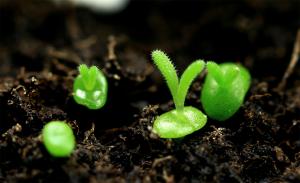What Do We Share with a Plant Tree?
As humans, we often think of ourselves as vastly different from the rest of the natural world, including the plant kingdom. However, there are actually many similarities between us and the humble plant tree. In this article, we will explore some of these similarities and learn more about the ways in which we are connected to the rest of the natural world.
Respiration
One of the most fundamental ways in which humans and plant trees are similar is in the process of respiration. While humans breathe in oxygen and exhale carbon dioxide, plant trees do the opposite. They take in carbon dioxide and release oxygen into the air. In this way, we are both dependent on the same gases for survival. Without oxygen, we cannot live, and without carbon dioxide, plants cannot photosynthesize and produce the energy they need to grow and thrive.
Water and Nutrient Intake
Another important similarity between us and plant trees is our need for water and nutrients. Just like humans, plant trees rely on a steady supply of water and nutrients to survive. They have roots that absorb water and minerals from the soil, and they use these resources to grow and develop. Similarly, we drink water and eat nutrient-rich foods to fuel our bodies and maintain our health. Without adequate water and nutrients, both plants and humans would quickly wilt and die.
Growth and Development
Plant trees and humans also share a similar pattern of growth and development. Both begin as small, vulnerable entities and grow slowly over time, gradually developing into mature, complex beings. For plant trees, this process involves a variety of stages, from the germination of seeds to the growth of leaves, stems, and flowers. For humans, it begins with conception and continues through infancy, childhood, adolescence, and adulthood. Throughout this journey, we both rely on the same basic processes of cell division, nutrient absorption, and genetic expression to develop and thrive.
Environmental Impact
Perhaps the most important way in which we are connected to plant trees is through our shared impact on the environment. In recent years, scientists have become increasingly aware of the ways in which human activities, such as deforestation and burning fossil fuels, are contributing to climate change and other environmental challenges. At the same time, plant trees are vital to maintaining the balance of the global ecosystem. They absorb carbon dioxide, filter pollutants from the air and water, and provide homes and resources for a wide variety of other organisms. By recognizing our shared impact on the environment, we can begin to work together to protect and preserve this precious resource for future generations.
Conclusion
In conclusion, while it may seem that humans and plant trees are vastly different, we are actually deeply connected in a variety of ways. From our reliance on oxygen, water, and nutrients to our shared journey of growth and development, we share many similarities with these plants. By recognizing these connections and working together to protect the environment, we can ensure a bright and healthy future for both ourselves and the natural world around us.

 how many times do yo...
how many times do yo... how many planted tre...
how many planted tre... how many pine trees ...
how many pine trees ... how many pecan trees...
how many pecan trees... how many plants comp...
how many plants comp... how many plants can ...
how many plants can ... how many plants and ...
how many plants and ... how many pepper plan...
how many pepper plan...
































